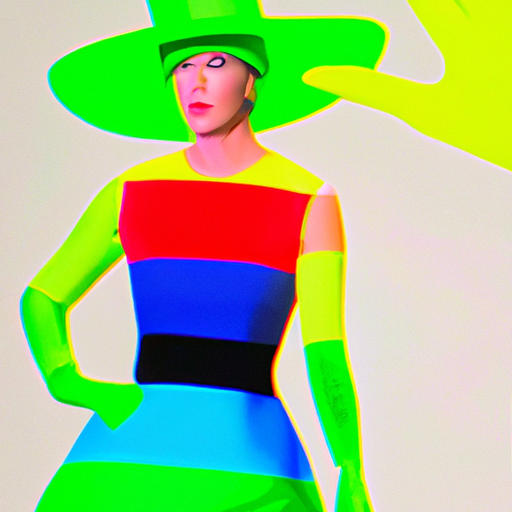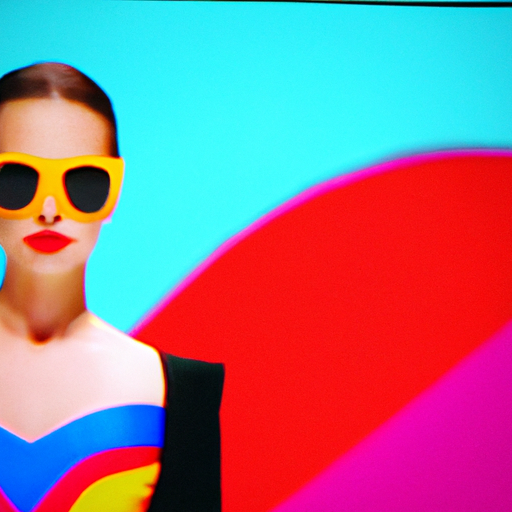
-
Table of Contents
- Runway to Design: Art and Fashion Fusion
- The Influence of Art on Fashion
- 1. The Renaissance and Baroque Periods
- 2. Impressionism and Art Nouveau
- 3. Pop Art and Street Art
- Artistic Elements in Fashion Design
- 1. Prints and Patterns
- 2. Embroidery and Appliqué
- 3. Sculptural Silhouettes
- Case Study: Alexander McQueen’s “Savage Beauty”
- The Future of Art and Fashion Fusion
- Summary
Runway to Design: Art and Fashion Fusion

Art and fashion have long been intertwined, with designers drawing inspiration from various art movements and incorporating artistic elements into their designs. The runway serves as a platform for designers to showcase their creativity and express their artistic vision. This article explores the fusion of art and fashion, examining how art influences fashion and how fashion designers incorporate artistic elements into their collections.
The Influence of Art on Fashion
Art has always been a source of inspiration for fashion designers. From the Renaissance to the modern art movements of the 20th century, artists have influenced fashion in various ways. Let’s explore some key examples:
1. The Renaissance and Baroque Periods
The Renaissance and Baroque periods were characterized by elaborate and ornate art. Paintings by artists such as Leonardo da Vinci and Caravaggio featured rich colors, intricate details, and opulent fabrics. These artistic elements found their way into fashion, with designers incorporating luxurious fabrics, intricate embroidery, and elaborate embellishments into their garments.
For example, the Italian fashion house Dolce & Gabbana often draws inspiration from Renaissance art in their collections. Their designs feature intricate lacework, opulent fabrics, and elaborate prints reminiscent of the paintings of that era.
2. Impressionism and Art Nouveau
The Impressionist and Art Nouveau movements of the late 19th and early 20th centuries brought a new sense of lightness and fluidity to art. Artists like Claude Monet and Alphonse Mucha captured the beauty of nature and the female form in their works. Fashion designers of the time embraced these artistic principles, creating garments that emphasized movement and natural forms.
One notable example is the fashion designer Paul Poiret, who was heavily influenced by the Art Nouveau movement. His designs featured flowing silhouettes, floral motifs, and soft, pastel colors, reflecting the artistic style of the time.
3. Pop Art and Street Art
In the 20th century, art movements such as Pop Art and Street Art emerged, challenging traditional notions of art and blurring the boundaries between high and low culture. Artists like Andy Warhol and Jean-Michel Basquiat brought art to the streets, using everyday objects and graffiti as their canvas.
Fashion designers have embraced the bold and vibrant aesthetic of these art movements. Brands like Moschino and Jeremy Scott have incorporated Pop Art-inspired prints and graffiti motifs into their collections, creating a fusion of art and fashion that appeals to a younger, more urban audience.
Artistic Elements in Fashion Design
While art serves as a source of inspiration for fashion designers, they also incorporate artistic elements directly into their designs. Here are some key artistic elements commonly found in fashion:
1. Prints and Patterns
Prints and patterns are a popular way for designers to incorporate artistic elements into their collections. From floral motifs to abstract designs, prints can add visual interest and create a unique aesthetic. Designers often collaborate with artists to create exclusive prints for their collections.
For example, the fashion brand Prada collaborated with the artist Christophe Chemin to create a series of prints for their Spring/Summer 2016 collection. The prints featured bold colors and abstract designs, adding an artistic touch to the garments.
2. Embroidery and Appliqué
Embroidery and appliqué are traditional techniques that allow designers to add intricate details and textures to their garments. These techniques are often used to create artistic motifs, such as flowers, animals, or abstract shapes.
One designer known for his use of embroidery is Alexander McQueen. His collections often feature elaborate embroidery and appliqué work, creating a sense of artistry and craftsmanship.
3. Sculptural Silhouettes
Sculptural silhouettes are another way designers incorporate artistic elements into their designs. By manipulating fabrics and creating exaggerated shapes, designers can create garments that resemble works of art.
The fashion designer Iris van Herpen is known for her avant-garde designs that blur the line between fashion and art. Her garments often feature sculptural elements, such as 3D-printed structures or intricate draping, creating a sense of movement and fluidity.
Case Study: Alexander McQueen’s “Savage Beauty”
A notable example of the fusion of art and fashion is the exhibition “Alexander McQueen: Savage Beauty” held at the Metropolitan Museum of Art in 2011. The exhibition showcased the work of the late fashion designer Alexander McQueen, highlighting his innovative designs and his ability to blur the boundaries between fashion and art.
The exhibition featured over 100 garments, ranging from McQueen’s early collections to his final runway show. The garments were displayed alongside sculptures, photographs, and videos, creating a multi-sensory experience for visitors.
McQueen’s designs were known for their theatricality and craftsmanship. He often drew inspiration from art, history, and nature, creating garments that were both visually stunning and thought-provoking. The exhibition highlighted the artistic elements in McQueen’s work, showcasing his use of embroidery, sculptural silhouettes, and innovative materials.
“Savage Beauty” was a huge success, attracting over 660,000 visitors during its run at the Metropolitan Museum of Art. It demonstrated the public’s fascination with the fusion of art and fashion and the enduring impact of McQueen’s artistic vision.
The Future of Art and Fashion Fusion
The fusion of art and fashion is an ever-evolving phenomenon, with designers constantly pushing the boundaries of creativity. As technology advances, new possibilities for artistic expression in fashion emerge.
For example, 3D printing has opened up new avenues for designers to create intricate and sculptural garments. Designers like Iris van Herpen have embraced this technology, using it to push the boundaries of traditional fashion design.
Furthermore, collaborations between artists and fashion designers continue to thrive. Brands often collaborate with artists to create limited-edition collections or to incorporate artistic elements into their designs. These collaborations not only bring art to a wider audience but also provide a platform for artists to showcase their work in a new context.
Summary
The fusion of art and fashion is a dynamic and ever-evolving phenomenon. Art has always influenced fashion, with designers drawing inspiration from various art movements throughout history. Fashion designers incorporate artistic elements into their designs, such as prints, embroidery, and sculptural silhouettes. Exhibitions like “Alexander McQueen: Savage Beauty” demonstrate the enduring impact of the fusion of art and fashion.
As technology advances, new possibilities for artistic expression in fashion emerge. 3D printing and collaborations between artists and fashion designers are shaping the future of art and fashion fusion.
Ultimately, the fusion of art and fashion allows designers to create garments that are not
